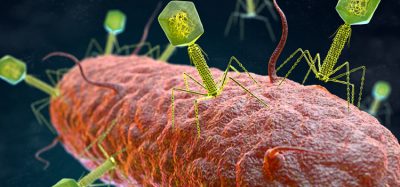New DNA-editing technique extends lifespan of mice with progeria
Posted: 7 January 2021 | Victoria Rees (Drug Target Review) | No comments yet
Researchers have used a novel DNA-editing method to convert one base pair to another, increasing the lifespan of mice with progeria.


Researchers have successfully used a DNA-editing technique to improve the lifespan of mice with the genetic variation associated with progeria, a rare genetic disease that causes extreme premature aging in children and can significantly shorten their life expectancy.
The study was a collaboration between the US National Human Genome Research Institute (NHGRI), part of the National Institutes of Health (NIH); the Broad Institute of Harvard and MIT; and the Vanderbilt University Medical Center, all US.
According to the researchers, progeria, which is also known as Hutchinson-Gilford progeria syndrome, is caused by a mutation in the nuclear lamin A (LMNA) gene in which one DNA base C is changed to a T. This change increases the production of the toxic protein progerin, which causes the rapid ageing process.
“CRISPR editing, while revolutionary, cannot yet make precise DNA changes in many kinds of cells,” said Dr David Liu, a senior author on the paper. “The base-editing technique we have developed is like a find-and-replace function in a word processor. It is extremely efficient in converting one base pair to another, which we believed would be powerful in treating a disease like progeria.”
The researchers’ DNA-editing technique, called base editing, substitutes a single DNA letter for another without damaging the DNA. To test the effectiveness of their base-editing method, the team collaborated with the Progeria Research Foundation to obtain connective tissue cells from progeria patients. The team used the base editor on the LMNA gene within the patients’ cells in a laboratory setting. The treatment fixed the mutation in 90 percent of the cells.
Following this success, the researchers tested the gene-editing technique by delivering a single intravenous injection of the DNA-editing mix into nearly a dozen mice with the progeria-causing mutation soon after birth. The gene editor successfully restored the normal DNA sequence of the LMNA gene in a significant percentage of cells in various organs, including the heart and aorta.
Many of the mice cell types still maintained the corrected DNA sequence six months after the treatment. In the aorta, the results were even better than expected, as the edited cells seemed to have replaced those that carried the progeria mutation and dropped out from early deterioration. Most dramatically, the treated mice’s lifespan increased from seven months to almost 1.5 years. The average normal lifespan of the mice used in the study is two years.
“As a physician-scientist, it is incredibly exciting to think that an idea you have been working on in the laboratory might actually have therapeutic benefit,” said Assistant Professor Jonathan Brown. “Ultimately our goal will be to try to develop this for humans, but there are additional key questions that we need to first address in these model systems.”
The study was published in the journal Nature.
Related topics
CRISPR, DNA, Genome Editing, Genomics
Related conditions
Hutchinson-Gilford Progeria Syndrome (HGPS), Progeria
Related organisations
Broad Institute, US National Human Genome Research Institute (NHGRI), US National Institutes of Health (NIH), Vanderbilt University Medical Center
Related people
Assistant Professor Jonathan Brown, Dr David Liu







